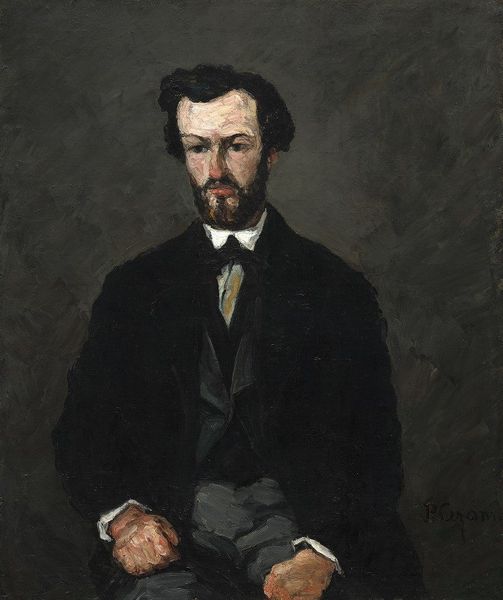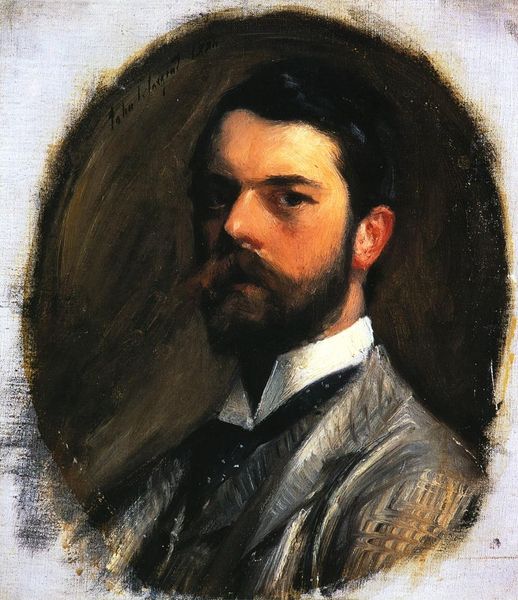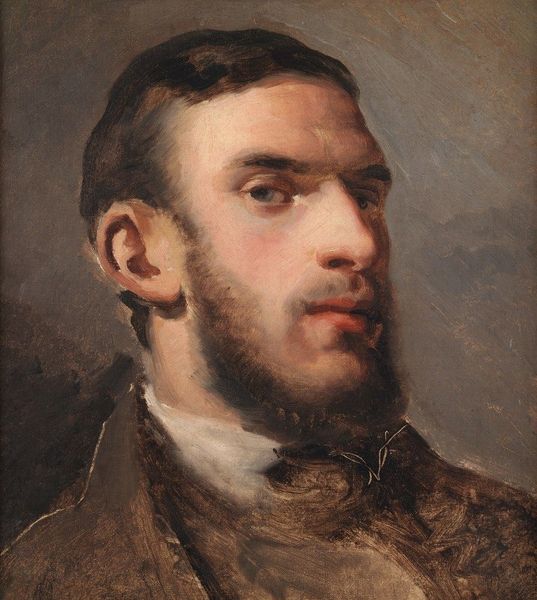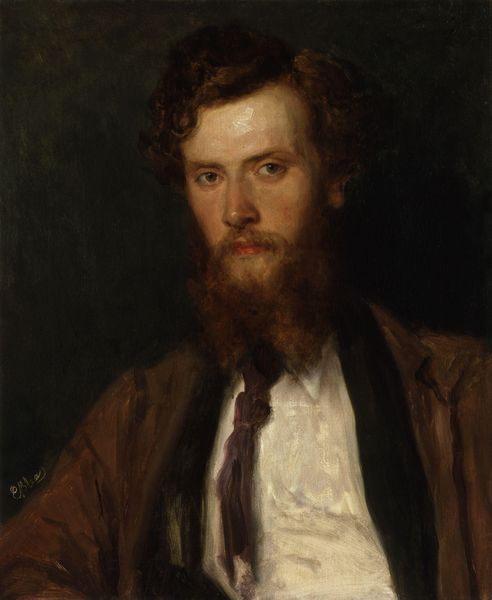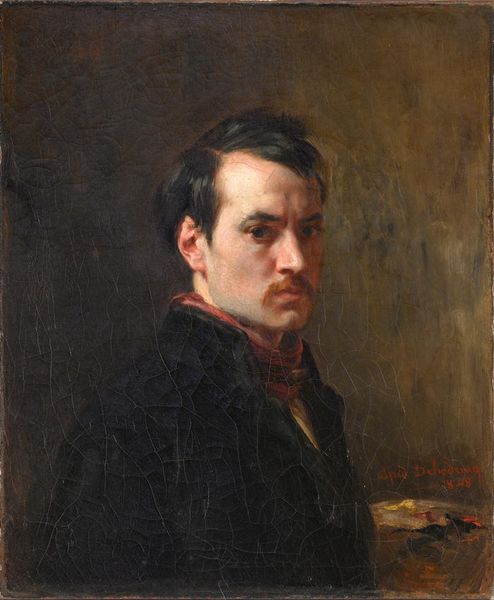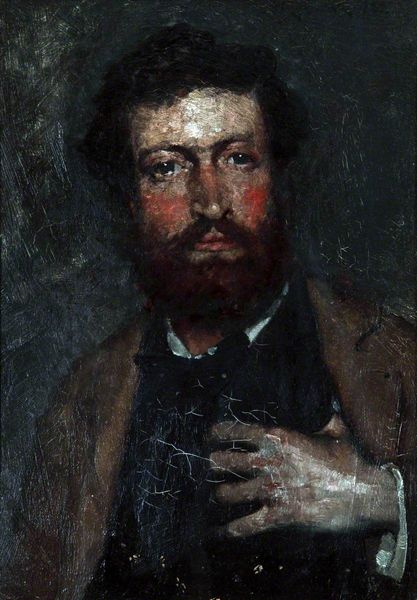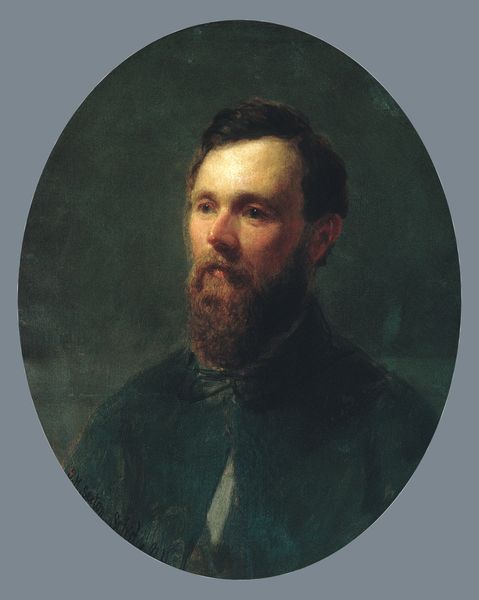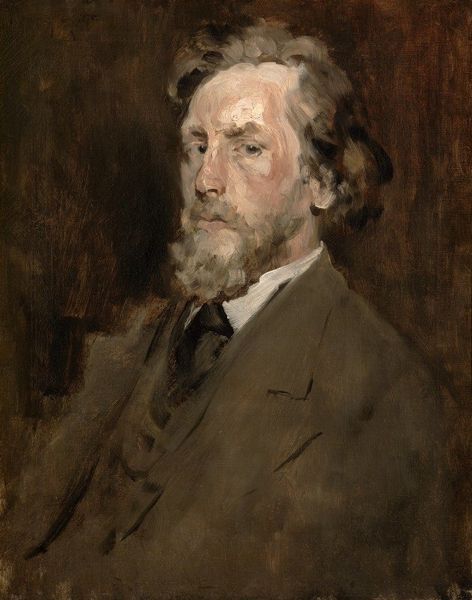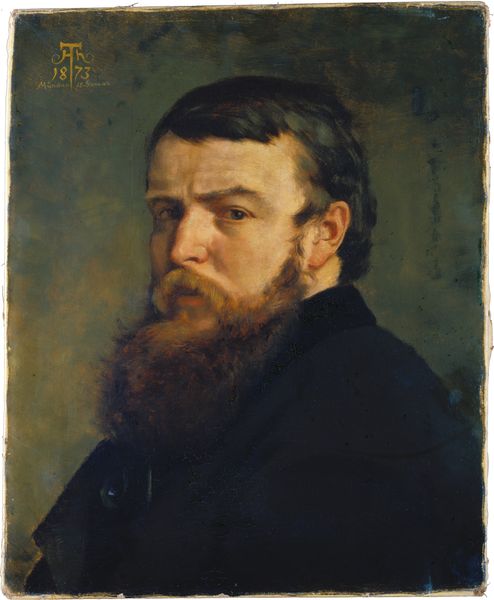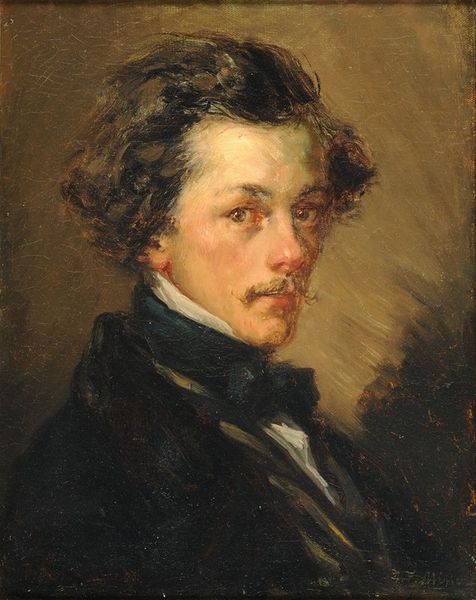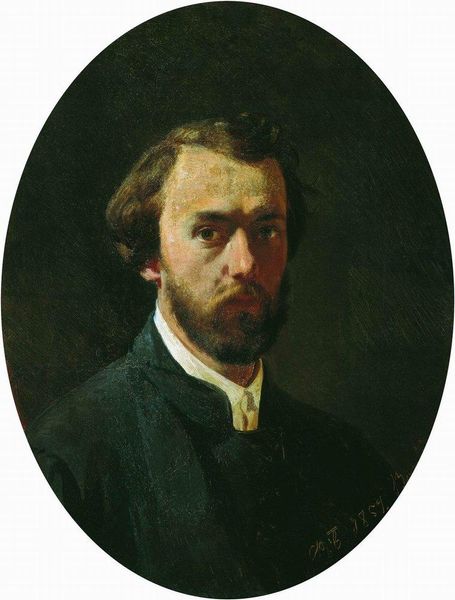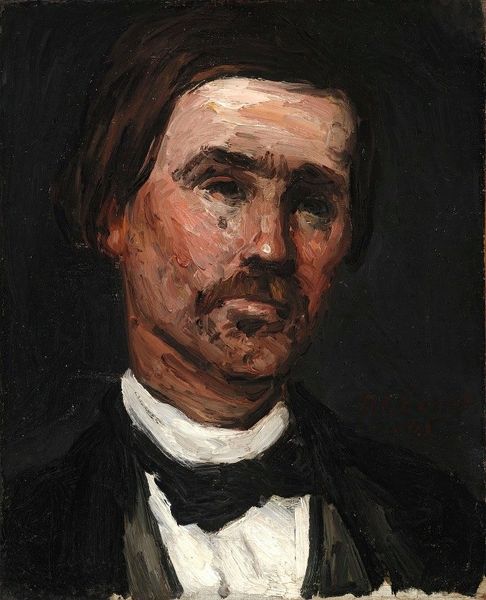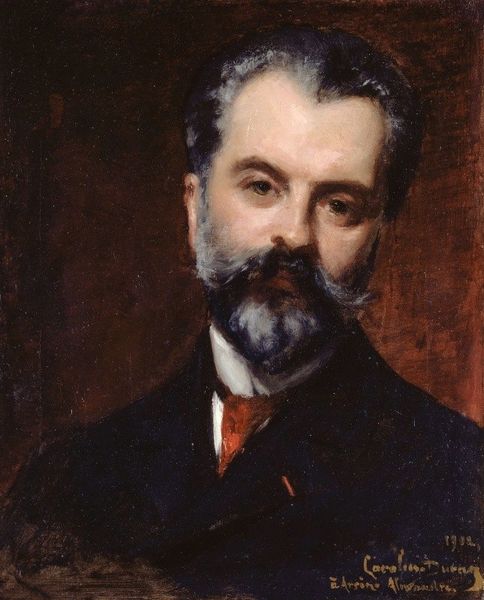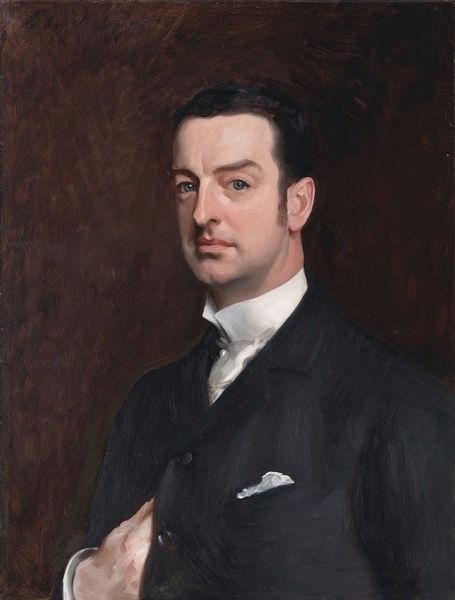
Copyright: Public domain
Curator: Here we have Carolus-Duran’s “Portrait of Hector Hanoteau,” created in 1870 using oil paints. It’s part of a private collection now. What strikes you first about it? Editor: The intensity of his gaze, certainly. It's arresting. There’s a certain heaviness to it as well, amplified by the dark, muted palette. I wonder about the context, the unspoken narratives behind that intense look. Curator: Hanoteau was a fellow painter, deeply involved in the Realist movement and its associated debates. Duran here presents Hanoteau not just as an individual, but also as a figure embodying certain artistic principles of the time. Academic art intersecting with realism. Editor: Right. That tiny red ribbon pinned to his jacket. It's the Legion of Honor? I always find it interesting how portraiture was often deployed as a means of social affirmation, signaling the subject’s status within the establishment, even as artistic movements like Realism purported to challenge those structures. How much was Hanoteau subverting from within? Curator: The layering is also quite captivating. Notice the visible brushstrokes, especially in the white shirt and the cravat. Duran utilizes impasto techniques which add texture and dynamism. It shows a departure from the smooth surfaces valued in earlier academic painting, though in subject he sticks close to familiar tropes. Editor: I’m wondering about the construction of masculinity on display. That thick beard, the dark suit. How much does this portrayal adhere to or deviate from prevailing ideas of male identity in 19th-century France? There is that striking intensity of the gaze, an honesty... almost a vulnerability...that contradicts traditional portrayals of stoicism. Curator: Yes, there’s an intentionality about constructing that particular image, tying it both to the romantic tradition and the emergent realist ideals. Editor: It seems even portraiture became another battleground for expressing allegiance or rebellion within artistic circles. It pushes us to question the politics inherent in image-making. Thank you, I’m leaving with plenty to reflect on regarding status, representation, and visual codes. Curator: A worthy set of considerations. It’s important to remember art objects don’t exist in a vacuum; they're reflections of complex cultural forces at work.
Comments
No comments
Be the first to comment and join the conversation on the ultimate creative platform.
